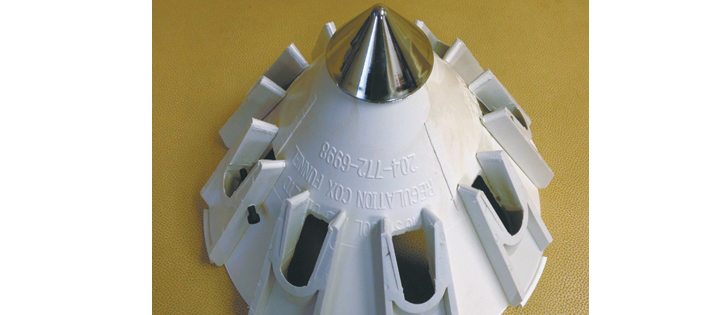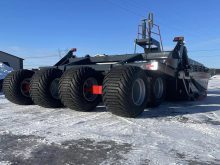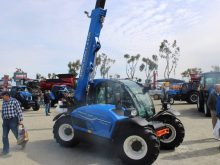Patents on the grain divider expired decades ago, but the basic design lives on, thanks to new materials
BRANDON — A Canadian company has brought 100-year-old grain sample divider technology into the 21st century.
The Boerner grain divider was invented a century ago to solve the problem of plump kernels rolling to the top and heavy kernels going to the bottom when large samples were poured to make smaller portions.
The all-metal machine was so accurate that its use has been written into grain handling regulations.
However, the $1,800 price tag has discouraged many from owning them, as has its relatively heavy weight at 32 pounds.
Read Also

Growing garlic by the thousands in Manitoba
Grower holds a planting party day every fall as a crowd gathers to help put 28,000 plants, and sometimes more, into theground
“A lot of guys in the business know they should be splitting their samples for better accuracy, but they just won’t spend the $1,800 to buy a Boerner,” said Jason Diehl of Dimo’s Labtronics in Winnipeg, the largest supplier of grain testing equipment in Western Canada.
“But they will spend $450 on our new grain divider. The Dimo Divider is modelled after the original Boerner, but we’ve upgraded certain aspects of the Boerner.
Diehl said the new design is cheaper, weighs less and is more accurate.
“The Boerner has an accuracy of plus or minus one percent on a 1,000 gram sample of hard red spring wheat. Our splitter has an accuracy of plus or minus 0.5 percent on the same 1,000 gram sample.”
Diehl came to this conclusion by dumping 100 big buckets of canola, peas and hard red spring wheat through both the Dimo splitter and the Boerner.
“One thing we learned is that larger seeds like peas have more variation or a wider range within a sample than smaller seeds like canola, regardless of which splitter they go through.”
He said the Dimo splitter is as easy to use as the Boerner. A five gallon bucket of grain is poured into the white funnel at the top and the slide is pulled to open the gate and let the grain fall to the cone. The precise geometry of the cone and the chutes catching the grain ensures that the dispersal is uniform into both sample compartments.
The original splitter catches grain using 38 chutes around the cone, but the Dimo splitter achieves better accuracy with only 16 chutes.
“Quebec is the only province with their own agency for regulating the grain handling industry. Until now, they have used the Boerner exclusively, but now that they’ve tested our unit, they’re buying our divider,” he said. “We’ve sold the Dimo divider to Pioneer Grain, individual grain elevators, seed companies and third party inspection companies like Certispect, Intertek and SGS.”
For more information, contact Jason Diehl at 204-772-6998 or visit www.labtronics.ca.


















